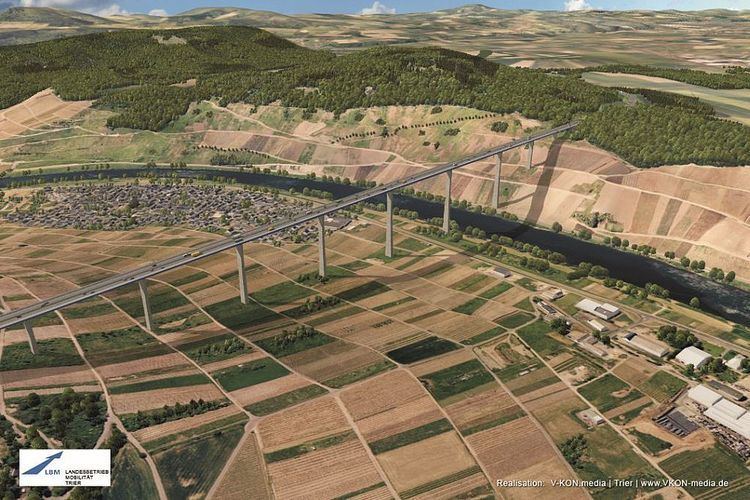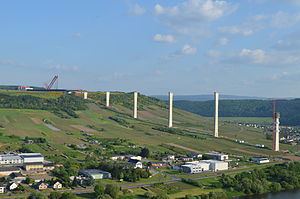Carries Motor vehicles Design Beam bridge Height 158 metres (518 ft) Longest span 210 m Bridge type Beam bridge | Crosses Moselle Width 29.0 metres (95.1 ft) Total length 1,702 m Location Ürzig Body of water Moselle | |
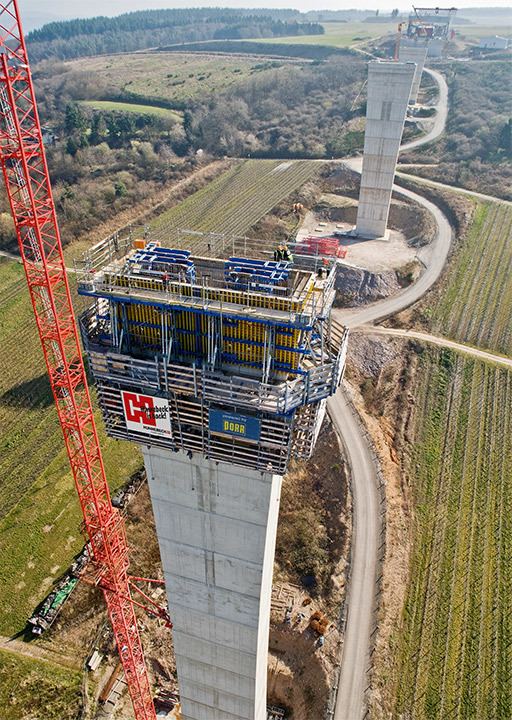 | ||
Locale Ürzig and Zeltingen-Rachtig, Rheinland-Pfalz, Germany Materials Structural steel, Concrete Similar Moselle, Moselle Viaduct, Schierstein Bridge, Moselle Valley, Moselsteig | ||
The Hochmoselbrücke (High Moselle Bridge) is a major new road bridge, currently under construction, that will cross the valley of the Moselle south of Ürzig and north of Zeltingen-Rachtig in Rheinland-Pfalz, Germany. The bridge – part of a new road connection, the Hochmoselübergang (High Moselle Crossing), incorporating a rerouted stretch of Bundesstrasse (Federal Highway) 50 – is intended to facilitate the flow of traffic between Belgian and Dutch ports and the greater Frankfurt area.
Contents
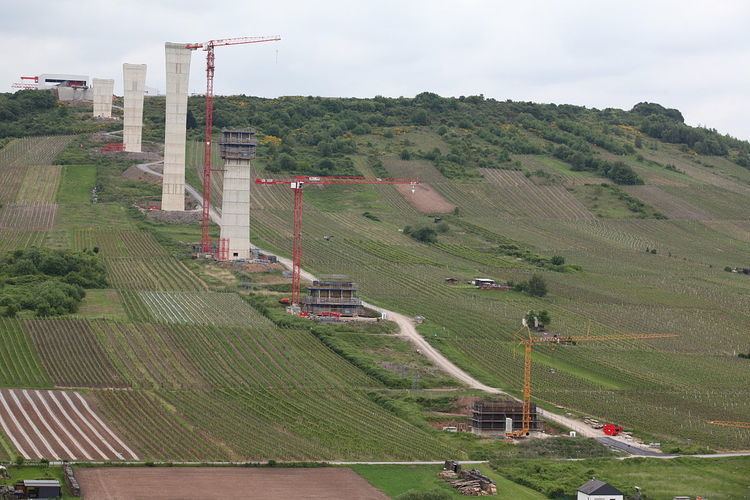
Construction
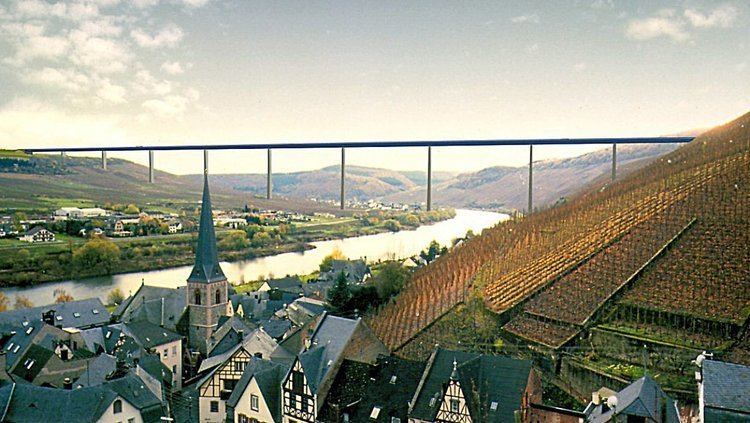
A proposal for the highway and bridge was first made three decades ago for strategic reasons during the Cold War. The project was reactivated to link the Frankfurt area, specifically the Hahn airport, to the Belgian and Dutch harbors with updated plans drawn in the early 21st century.
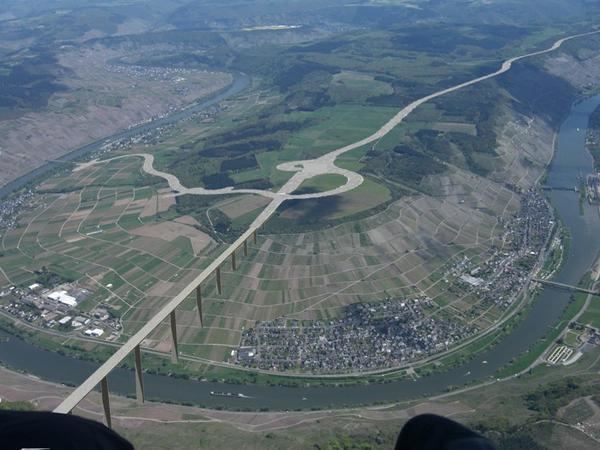
The plan calls for a 1702.4 m long steel box beam bridge that crosses the river at a maximum height of 158 m. The width of the bridge will be 29.0 m to allow four-lane traffic. Ten monolithic pylons made from concrete will support the bridge; their height varies between 15 and 150 m. The estimated costs are 270 million euros. The project is to be completed by 2016.
Opposition
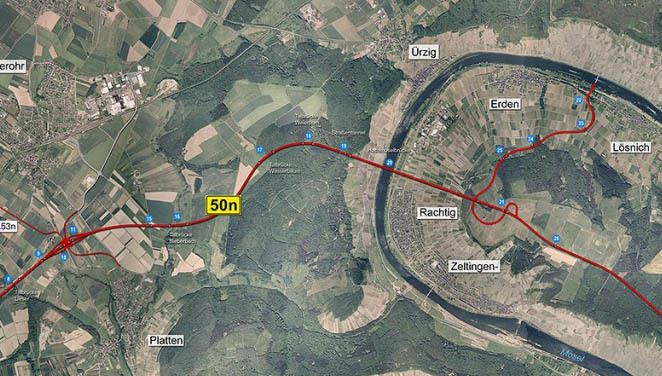
Opposition to the project is based on questions of its economical necessity and the negative ecological impact on the Mosel wine region. It is indicated that current available highway connections between the Belgian and Dutch harbors and Frankfurt are adequate, and the proposed highway with its bridge would not present a shortcut and thus would not be economically advantageous. More importantly, perhaps, is the concern that the "ungainly" bridge would destroy a historical cultural section of major significance within the Mosel wine region. The section is home to some of the finest and most historic vineyards of Germany A potential change in the local ecosystem will affect the premier riesling areas of the Wehlener Sonnenuhr, Graacher Himmelreich, and Ürziger Würzgarten. International wine experts, among them Hugh Johnson, Jancis Robinson and Stuart Pigott, are opposing the project and fear that the unique microclimate responsible for the Mosel rieslings will be impacted.
Literature
